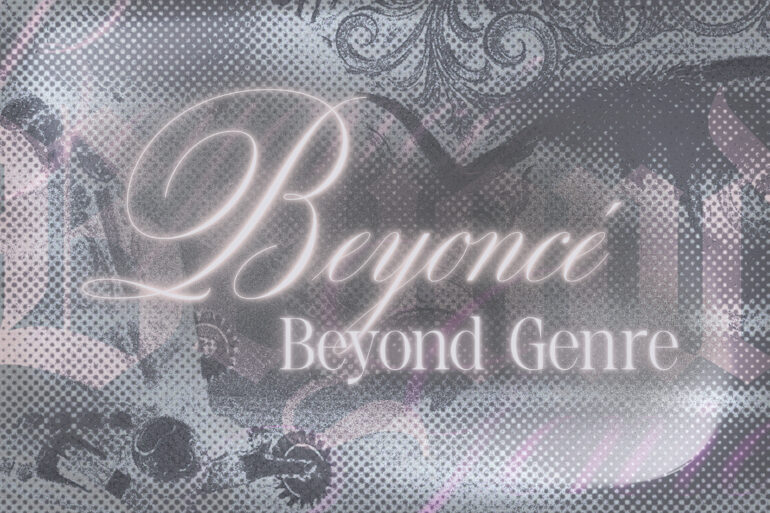After the house party and gay extravaganza of the “Renaissance” world tour ended, the BeyHive assumed Queen B (Beyoncé Knowles Carter) would disappear into seclusion. However, Beyoncé shocked fans with the reveal of her eighth studio album, “Cowboy Carter.” An infusion of country, house, hip hop, and opera, “Cowboy Carter” is not your typical Beyoncé album. With features from Dolly Parton, Willie Nelson, Miley Cyrcus, and Post Malone, Beyoncé expands on the concept of country through dynamic musical arrangements, historical references, and sporting the newest western style.
However, the main star of the album is its amalgamation of genres. Beyoncé addresses the mashup of genres in the song “Spaghetti.” The song begins with a voiceover from Linda Martell. Throughout the album, Beyoncé pays homage to Martell in the songs “Spaghetti” and “Linda Martell Show.” Martell makes a profound statement in “Spaghetti” that, “Genres are a funny little concept, aren’t they/In theory, they have a simple definition that’s easy to understand/ But in practice, well, some may feel confined.”
Martell is a historical figure in Black country music history and was the first Black woman to play at the Grand Ole Opry. In “Cowboy Carter”, Beyoncé is uplifting this history and creating a platform to highlight underrated black country artists such as Tanner Adell, Willie Jones, Shaboozey, and many more. The album has given these artists a rare spotlight in country music. In fact on May 3rd, Shaboozey’s newest hit, “A Bar Song (Tipsey)”, was No. 1 on Billboard’s Hot Country Songs chart, replacing Beyonce’s spot with “Texas Hold’Em.” Overall, “Cowboy Carter” is a spurred boot forcing country to open its door.
Throughout the album, Beyoncé plays with the notion of country music but changes to different genres, such as hip-hop, pop, and opera. There is never a distinct sound, only the remnants of country, through guitars, banjos, and occasional references. Some people have labeled it a “country” album, while others never tried to label it. This is Beyoncé’s way of showing that she’s more than an R&B or hip-hop singer; she is an artist no label can describe. Truly, what is the point of genres if they force an artist such as Beyoncé, to confine her talents?
In the past, music genres were important, as they separated the distinct types of music, such as rock, pop, house, and country. Music labels used them as a way to market and control the image of an artist. Though, as artists began to play around with their sounds, genres became murky. For decades, artists such as Tina Turner –Beyonce’s idol– have played with the notion of them. Turner began her career as a duo with her former husband, Ike Turner, performing R&B/Soul music. After her divorce from Ike, she began focusing on Rock n Roll, changing her image to the Queen of Rock n Roll. Tina Turner was a rare phenomenon when an artist can swap to a different genre. Recently, no matter the strides from musicians, labels and fans continue to limit an artist to one type of music.
Before “Cowboy Carter” was released, Beyoncé wrote a statement declaring, “This ain’t a Country album. This is a ‘Beyoncé’ album.” She never put the album in a dedicated genre, as her goal was to subvert the notion of music and genres. Reflecting on her experiment with “Cowboy Carter,” Beyoncé has spent the past months melding her style and aesthetic to fit the album.
Since February, Beyoncé has solely been spotted wearing western styles, including an iconic blonde wig. Although Beyoncé refrained from calling “Cowboy Carter” a country album, she has embraced western luxury fashion. Glamour has codified Beyoncé as the creator of the “cowboy quiet luxury” aesthetic. From sporting a Ferragamo suit to a tan Chloé coat and burgundy lace bodysuit, “Cowboy Carter” era has Beyoncé experimenting with femininity in western apparel. This new era in Beyoncé’s life feels reminiscent of her Destiny Child wardrobe, with snakeskin outfits and an early 2000s western aesthetic.
Although “Cowboy Carter” is seen as a mixture of genres centered around a country framework, Beyoncé has embodied the country artist appearance. Similar to her music, Beyoncé is adapting this aesthetic to fit her superstar image. This is not the first time Beyoncé has changed her style to match her album. During the “Renaissance” era, she was seen at events decked out in silver, disco themed, opulent clothing. Her “Cowboy Carter” era is the opposite, with earthy colors such as beige, prints, and a subdued version of her iconic cowboy hat. As a BeyHive member who watched the infamous CMA award show moment when Beyoncé performed her 2016 hit “Daddy Lessons”, I vividly remember when she was met with a rude and racist audience. Some fans believe this performance inspired the creation of “Cowboy Carter” as Beyoncé was continuously called “not country enough.” Her current cowboy western style might be a way of showing the haters she is country enough.
Whether it’s music or fashion, Beyoncé is changing the perception of genres and labels for artists everywhere. Under one album, Beyoncé assembles country, hip-hop, house, and pop artists to create the masterpiece “Cowboy Carter.” What’s the next era for Beyoncé to explore? Will she walk a red carpet sporting a rock n’ roll themed ensemble — as Beyoncé seems to be referencing genres created by the Black community?
Who knows? But right now, I’m going to blast “Cowboy Carter” while searching the web for a pink rhinestone cowboy hat.
Words by Britney Maddox
Graphics by Anca Dubalaru

